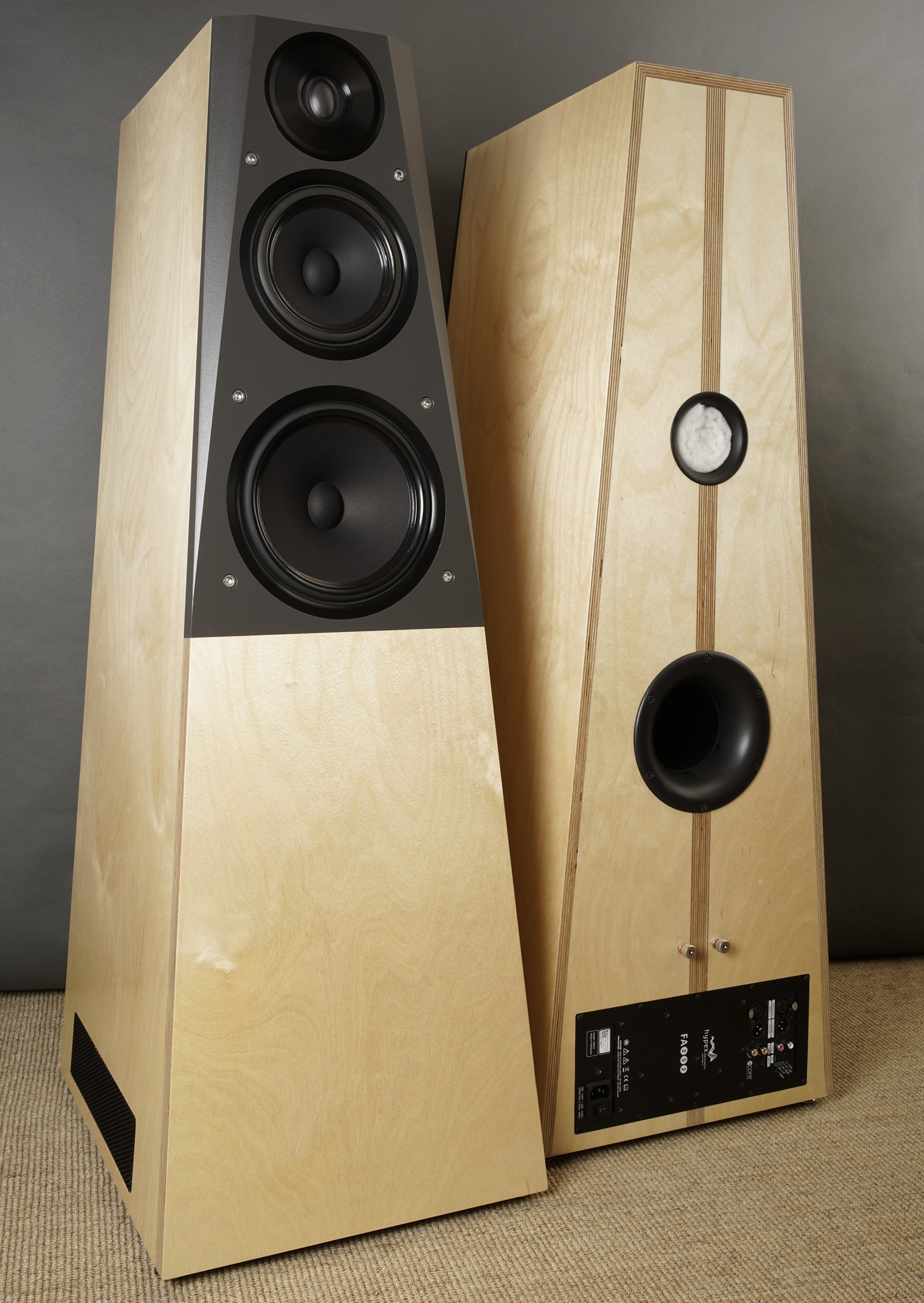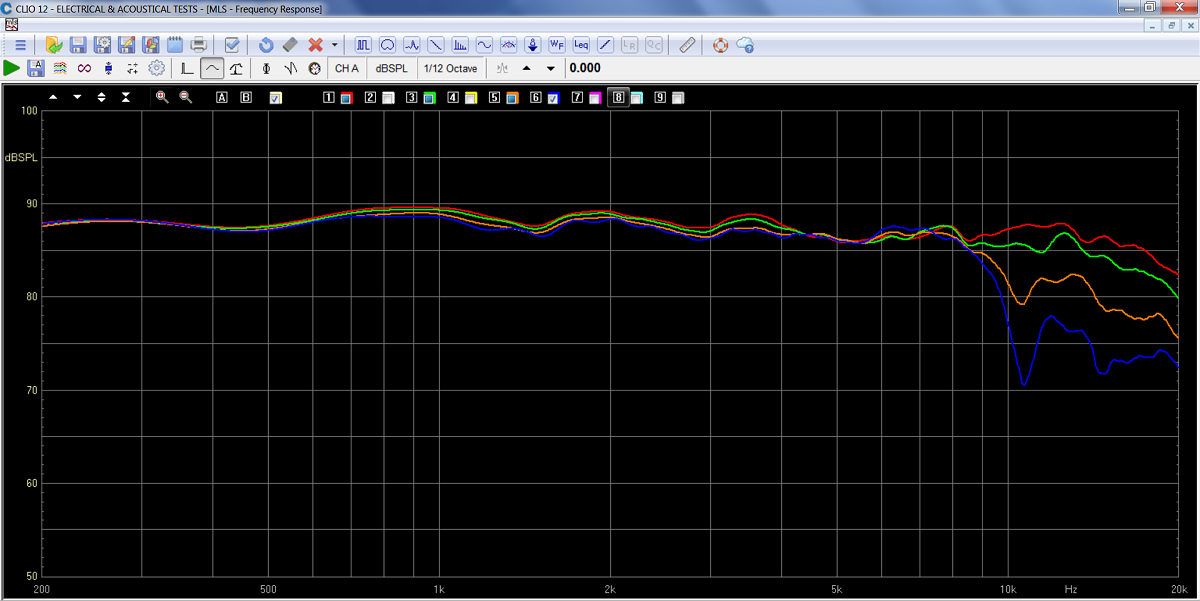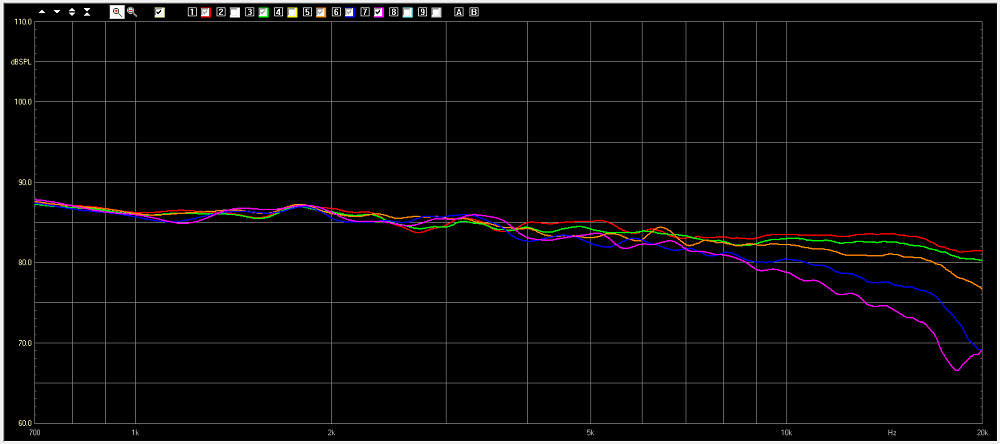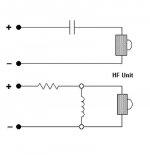Here is a very interesting new design from Troels Gravesen: the Ellipticor 3. This combines the Scan Speak Ellipticor drivers with a low-order crossover that omits capacitors entirely (echoes of the the Sonus Faber Extrema from way back). He seems very pleased with it.
With its impedance dropping to 3 ohms, it certainly wouldn't suit my 300B amplification, even with a Hypex plate amp behind the subwoofer driver, but it might still have tempted me if I weren't collecting parts for another project.

Alex
With its impedance dropping to 3 ohms, it certainly wouldn't suit my 300B amplification, even with a Hypex plate amp behind the subwoofer driver, but it might still have tempted me if I weren't collecting parts for another project.

Alex
The designs of Troels are all very beautiful. And there are "for all tastes".
I built the DTQWTII and they are the definitive, magnificent speakers.
If you have interest in something similar for the 300 B, you have the DTQWT III, it adapts to low power valves as well as to transistorized ones since they are both high sensitivity models. And there are no pass capacitors for the middle range, which is the most important thing.
The tendency to add these current plate amplifiers (as in subwofers) to satellite cabinets is something I do not share, however.
I mean to host them in the same cabinet, I have a Dayton but no DSP and I use it externally, and I'm building a couple of big subwofers. Soon I will see the result, I do not think I need DSP, but in that case I'll go for a Beringher Inuke 1000 DSP.
What I did not know was that the elliptical technology had extended to the outer shape of the speakers, even the tuning tubes.
It would be good if someone from the experts here could explain this new technological development !!!

I built the DTQWTII and they are the definitive, magnificent speakers.
If you have interest in something similar for the 300 B, you have the DTQWT III, it adapts to low power valves as well as to transistorized ones since they are both high sensitivity models. And there are no pass capacitors for the middle range, which is the most important thing.
The tendency to add these current plate amplifiers (as in subwofers) to satellite cabinets is something I do not share, however.
I mean to host them in the same cabinet, I have a Dayton but no DSP and I use it externally, and I'm building a couple of big subwofers. Soon I will see the result, I do not think I need DSP, but in that case I'll go for a Beringher Inuke 1000 DSP.
What I did not know was that the elliptical technology had extended to the outer shape of the speakers, even the tuning tubes.
It would be good if someone from the experts here could explain this new technological development !!!
If you have interest in something similar for the 300 B, you have the DTQWT III, it adapts to low power valves as well as to transistorized ones since they are both high sensitivity models.
Actually I am using his SEAS 3WC Mk2 at the moment, which work well (both in terms of efficiency and impedance) with my amps. Troels originally suggested the DTQWT for this very reason, but I didn't think they would be a good aesthetic match for our living room.
My next design will be a floor stander with a closed box bass alignment.
Alex
But still i have my doubts in some areas, like in crossover parts and limited off axis optimization
He does put some thought into lateral dispersion, but in this case I don't understand why the lateral response plot of the new Ellipticor is so much worse than that of the MUN17 (for example):
Ell-3:

Mun-17:

Perhaps it's something intrinsic to the Ellipticor tweeter?
Alex
Yes, Troels is a great designer, personally I really liked reading all his section dedicated to cabinets / speakers of high sensitivity and its advantages.
High Efficiency Speakers
I followed that path, along with the return to the valves. I just need to complete a little extra in the spectrum in the first two octaves and it will be the end of my journey in search of musical nirvana.
Allow me an OT:
Did you notice that there is always talk of the 1814 Overture to impress your guests?
There are other alternatives that are not as well known, at least this one was not for me, I discovered it recently.
Connect your streaming service and try this track, essential with good SPL, say close to 100 db, I think that would be like standing on the same site of Emmanuelle Haim, the director.
Ask your guests if they have heart problems before. I say it very seriously.
High Efficiency Speakers
I followed that path, along with the return to the valves. I just need to complete a little extra in the spectrum in the first two octaves and it will be the end of my journey in search of musical nirvana.
Allow me an OT:
Did you notice that there is always talk of the 1814 Overture to impress your guests?
There are other alternatives that are not as well known, at least this one was not for me, I discovered it recently.
Connect your streaming service and try this track, essential with good SPL, say close to 100 db, I think that would be like standing on the same site of Emmanuelle Haim, the director.
Ask your guests if they have heart problems before. I say it very seriously.
Attachments
Connect your streaming service and try this track, essential with good SPL, say close to 100 db, I think that would be like standing on the same site of Emmanuelle Haim, the director.
Ask your guests if they have heart problems before. I say it very seriously.
Fun! Here it is on YouTube, for those who don't stream.
I couldn't help being reminded of the "Garage door" track from the HiFi News Test CD...
Alex
I did not want to attach the link to YT because they compress the recordings, it would not be as impressive their audition as directly from the CD (if they buy it is a charity of a research foundation on cancer) or the streaming service.
Possibly for this last the link you attach does not work ...
What I did not know was that the elliptical technology had extended to the outer shape of the speakers, even the tuning tubes.
It would be good if someone from the experts here could explain this new technological development !!!
Beyond my joke about the distorted photo, (corrected by clicking) I read the Troels article when they presented these elliptical voice coil designs. But I do not really remember what the advantages are. A better dispersion in the vertical or horizontal axis (this depends on how we place it in the baffle) sounds too elementary. Will not SS be spinning too thin? Is this a commercial argument and not a true technological achievement? Is the investment in machinery radically different from the conventional ones for circular voice coils justified?
Ok, I wanted to clarify my own doubts, here is the result of the elliptical development, will this be audible when compared with another quality tweeter ?
ScanSpeak-Ellipticor-1
" The aim of elliptical voice coils is obviously to break symmetry. The force applied to the cone through the voice coils usually sees the same distance from the edge of the voice coil to the surround, thus inevitable break-up modes occur and we may have high-Q resonances disturbing frequency response and phase performance.
Apart from the basic resonance of the moving system, Fs, public enemy #1 for speaker designers is resonance. These ScanSpeak guys listen for resonances all the time and through design of coils, cones, suspensions, etc., they try to minimise resonance. From a cumulative spectral decay plot we can see where in the frequency band we have resonance/stored energy. Most common is cone break-up and resonances in the cone rubber/foam surround. We know the all too common ~1 kHz dip in frequency response from many 6" drivers due to part of the rubber surround starting moving in opposite direction to the cone. At a certain frequency the rubber surround holds too much mass, and rigidity is too low and the cone may move outwards while the rubber moves inwards, thus the two parts are in opposite phase and we have a dip in response. Add to this the air flow around the half-roll rubber surround and we have a complex sum of issues to address - and balance.
Dips can be hard to hear unless severe, where peaks from dedicated cone break-up are more easily detected. And by the way, if a peak is not superseding a dip, the peak may be fairly good-natured and ear-friendly.
The driver here features a coating round the edge of the cone adding mass and elasticity to the inner part of the rubber surround in order to reduce the disturbance in the 1 kHz area. "
ScanSpeak-Ellipticor-1
" The aim of elliptical voice coils is obviously to break symmetry. The force applied to the cone through the voice coils usually sees the same distance from the edge of the voice coil to the surround, thus inevitable break-up modes occur and we may have high-Q resonances disturbing frequency response and phase performance.
Apart from the basic resonance of the moving system, Fs, public enemy #1 for speaker designers is resonance. These ScanSpeak guys listen for resonances all the time and through design of coils, cones, suspensions, etc., they try to minimise resonance. From a cumulative spectral decay plot we can see where in the frequency band we have resonance/stored energy. Most common is cone break-up and resonances in the cone rubber/foam surround. We know the all too common ~1 kHz dip in frequency response from many 6" drivers due to part of the rubber surround starting moving in opposite direction to the cone. At a certain frequency the rubber surround holds too much mass, and rigidity is too low and the cone may move outwards while the rubber moves inwards, thus the two parts are in opposite phase and we have a dip in response. Add to this the air flow around the half-roll rubber surround and we have a complex sum of issues to address - and balance.
Dips can be hard to hear unless severe, where peaks from dedicated cone break-up are more easily detected. And by the way, if a peak is not superseding a dip, the peak may be fairly good-natured and ear-friendly.
The driver here features a coating round the edge of the cone adding mass and elasticity to the inner part of the rubber surround in order to reduce the disturbance in the 1 kHz area. "
............ (echoes of the the Sonus Faber Extrema from way back)....
Alex
Interesting article, thanks !
A R of 20 ohms to protect the voice coil of the tweeter and a coil in parallel to maintain the required impedance ...... but this is not applicable to a conventional tweeter, it is necessary that it is manufactured especially for this development , it must have a very high SPL efficiency, - I also imagine that it will not be a fine conventional copper wire - which will add its high cost to the whole cabinet ...
But, as the article says, who looks at the price when buying an Italian high-end sports car ?
Attachments
Wow this is some speaker but at a cost.
Probably the most expensive kit I have seen wonder if many will build it.
Yes, but think of how much money you save without all the Jantzen Superior caps you would need for a standard Troels crossover...
To be serious, though, the full kit does include a pair of Hypex plate amps.
Alex
Dear All,
the really interesting thing here is in my opinion that Troels uses the inductive HP approach. I tried this as well in my fullrange/woofer 8/18 setup, after I received the hint onto this filter typologie from Christoph at Silvercore.
The price for the omission of a large cap in series with the fullrange is that the impedance drops down, as Troels noted correctly, in my case it went to 2,4 Ohms, with a 4 Ohm woofer, which I found a bit scary, although my amps seem not to care.
It has worked, but currently I´m back at a standard configuration for the filter, as this seems to integrate better. In simulations, both configurations can be arranged to have the same rolloff, so this does not make too much sense...
Maybe I´ll have to revisit the inductive approach.
One thing to note is that the inductor used has, at least in my system, to be of low resistance, otherwise the response of the fullrange will come back at resonant frequency, so for me the money saved with the cap goes into the inductor...
I would be highly interested in any findings others might have with regards to sound quality, comparing the inductive HP approach to standard approaches. I´m not interested in any cost savings, but in quality...
Once I revisit the IHP, I´ll compare and report...
All the best
Mattes
the really interesting thing here is in my opinion that Troels uses the inductive HP approach. I tried this as well in my fullrange/woofer 8/18 setup, after I received the hint onto this filter typologie from Christoph at Silvercore.
The price for the omission of a large cap in series with the fullrange is that the impedance drops down, as Troels noted correctly, in my case it went to 2,4 Ohms, with a 4 Ohm woofer, which I found a bit scary, although my amps seem not to care.
It has worked, but currently I´m back at a standard configuration for the filter, as this seems to integrate better. In simulations, both configurations can be arranged to have the same rolloff, so this does not make too much sense...
Maybe I´ll have to revisit the inductive approach.
One thing to note is that the inductor used has, at least in my system, to be of low resistance, otherwise the response of the fullrange will come back at resonant frequency, so for me the money saved with the cap goes into the inductor...
I would be highly interested in any findings others might have with regards to sound quality, comparing the inductive HP approach to standard approaches. I´m not interested in any cost savings, but in quality...
Once I revisit the IHP, I´ll compare and report...
All the best
Mattes
- Status
- This old topic is closed. If you want to reopen this topic, contact a moderator using the "Report Post" button.
- Home
- Loudspeakers
- Multi-Way
- Troels' new "sine cap" three-way

